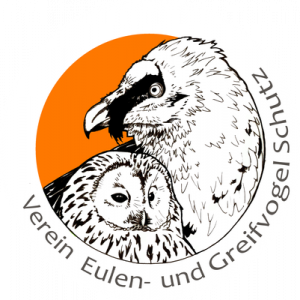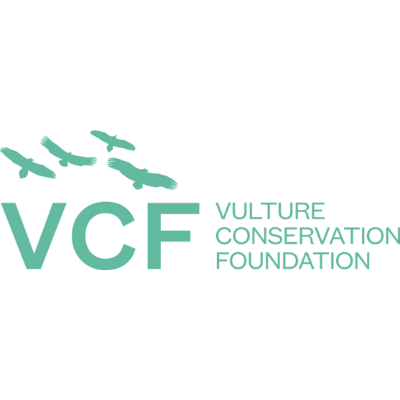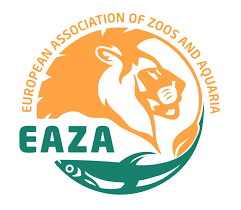
Sadly, last Monday, we had no choice but to bid farewell to one of the oldest and last remaining ‘founder’ birds within our Bearded Vulture Captive Breeding Network.
The health of the male Bearded Vulture ‘BG199’ has been deteriorating since 2021. During the summer of 2021, his human keepers even had to build a more comfortable climbing aid to the platform to help him out. This month, his condition worsened every day, and from the afternoon onwards, he only laid in the nest and barely reacted when his female approached him. Due to his poor state, we had to make the difficult decision and euthanize the vulture, who was around 40 years old.
His story is definitely special. After his rescue from a circus nearly three decades ago, the Bearded Vulture BG199 became an important part of a programme that brought back the species to areas where it went extinct.
Rescue from a circus
In April 1993, nature conservation authorities of the Czech Republic rescued the adult Bearded Vulture from a travelling circus. Initially, they placed the vulture in Prague Zoo. But later that year, the bird was transferred to the Richard Faust Bearded Vulture Specialised Captive Breeding Centre in Austria (RFZ), the first and only centre of its kind back then. The person in charge, Hans Frey, who still manages the centre today, is one of the pioneers responsible for establishing the Bearded Vulture captive breeding and reintroduction programme in the 1970s. The ultimate goal was to secure the future for the Bearded Vulture in the wild, which at the time was one of the world’s most vulnerable species and on the verge of extinction in Europe.
One of the last founder birds
The dream was great, but the challenge was even greater. The only solution to save the species was to convince European zoos to donate their captive Bearded Vultures to the programme, which amounted to around 40 individuals and only one brooding pair. Thankfully, everyone agreed, and we gradually began to build the captive breeding stock. Most birds were transferred to RFZ, and the specialized staff began pairing the first birds to form breeding pairs and produce descendants. These descendants either remained in captivity to develop and secure a sustainable captive breeding stock or were released to the wild in the Alps. So when BG199 entered RFZ, he became a founder of birds, which means he played an important part in the establishment of this ambitious captive breeding programme.
A new mission in life
As part of the programme, BG199 got a new ‘mission’ in life to support the conservation of his own species. And his contribution started almost immediately since he entered RFZ as an adult – typically, it takes about 8-10 years for Bearded Vultures to breed. But pair bonding, an already challenging process for the species, was even more complicated and dangerous with this vulture because he had an amputated wing and couldn’t fly. So his human keepers had to take even more precautions than usual. Yet, just one year later, after a couple of pair bonding tries – let’s not forget that species is extra picky when it comes to choosing a partner – he finally formed a pair with the female BG107 on the third attempt. Since then, this pair has significantly contributed to the comeback of the species in the Alps and beyond.

Leaving a legacy behind
The Bearded Vulture pair BG199 and BG107 have produced 19 juveniles. Eleven were released to the wild as part of reintroduction efforts, while eight remained in captivity. Of these captive-bred birds, five are still alive. The Bearded Vulture Captive Breeding Centre of Guadalentín has two females (BG389 and BG658), the Green Balkans one male (BG461), Belgrade Zoo one female (BG611) and Oasi di Sant’Alessio one male (BG993). Additionally, two of the pair’s descendants that died, the females T. Friedrichsfelde (BG292) and “Jacqueline” von Goldau (BG276), have contributed several descendants to the captive breeding network. What made the contributions of this founder bird even more significant was his exceptional gene status since he added new genes to the gene pool of the captive breeding and reintroduction programme, according to genetic analysis. So, even though BG199 died, future generations will keep his legacy alive for the years to come!
A key part of the reintroduction programme
Thanks to the contribution of BG199 and the other founder birds that helped build the captive breeding stock and produced the first descendants of the programme, the species has a brighter future in Europe. Today, we have 174 individuals in captivity and have released 381 captive-bred birds across several European regions. These efforts are responsible for the successful reintroduction of the species to the Alps, in what is considered one of the best wildlife comeback stories of our times! The Bearded Vulture has also returned to Andalusia, and this year a pair successfully bred in Vercors for the first time in 150 years. The species’ population is also being reintroduced in Maestrazgo, the Massif Central and Pre-Alps, and is being reinforced in Corsica.







